LACQUERWARE - TRADITIONAL MYANMAR HANDICRAFT
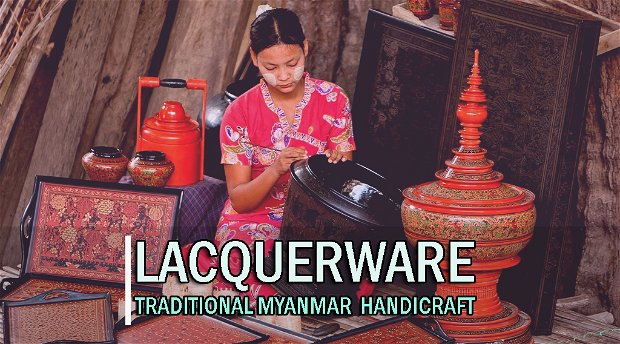
Traditional Myanmar lacquerware, or “Yun Hde”, is one of the country’s most famous handicrafts and has a very unique style. Myanmar Lacquerware has a long tradition and the art of Lacquerware had existed mainly at Bagan, central part of Myanmar in 11th to 13th century A.D. Myanmar Lacquerware is widely used as kitchen ware, jewelry boxes souvenirs, home decorations and petitions. One of the oldest lacquers was indeed discovered in the pagoda Mingalazedi, one of the built last with Bagan (at the 13th century). Bagan is the major center for the lacquerware industry where the handicraft is still practiced in the traditional manner. Myanmar Lacquerware is ‘hand-made products’ or ‘handicrafts’ and it is made of lacquer and molded bamboo strips. This work is difficult and time-consuming (six months to a year for a single item), involving teamwork and seven steps— making the inner parts, lacquering, drying, washing, polishing, 7 layers of lacquering and decoration.
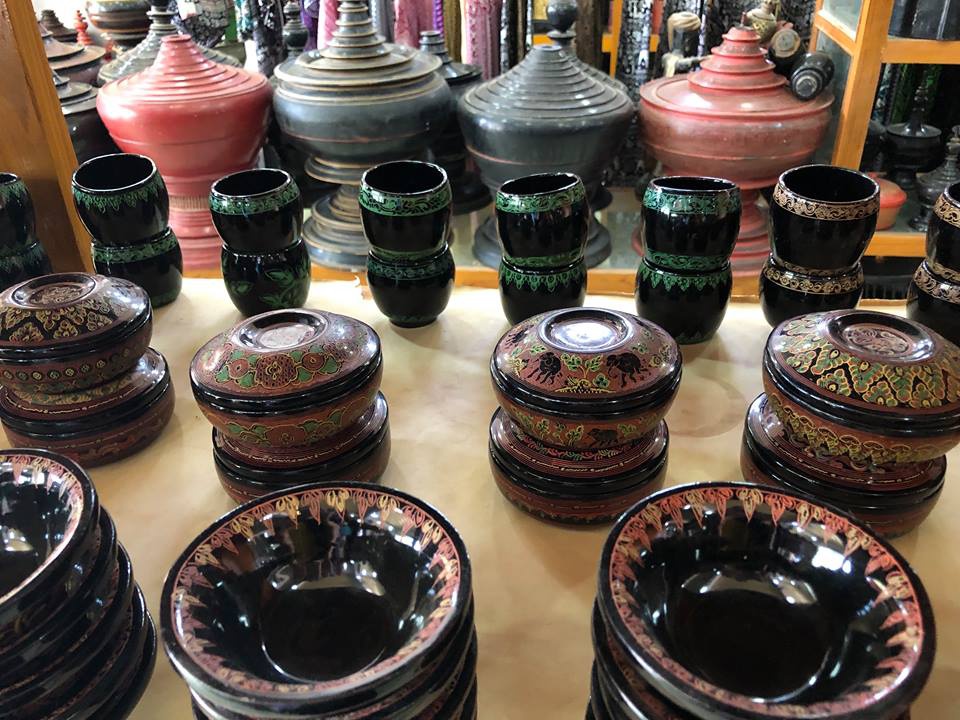
Making the inner parts
Lacquer sap (‘Thitsi’ from Myanmar forests) is the required main raw material needed to produce lacquerware. Lacquer sap is used to make the product durable, water-proof, to enable the products to be decorated with designs. Lacquer sap is produced in Shan State, Mawlamyaing, Ya-mae-tin, Mongywa and upper Myanmar. Bamboo is also a main raw material for producing lacquerware. Bamboo taken from the forests in Chin state and mostly transported from Katha, Shan State and upper Myanmar. The bamboos used to make the inner part of the lacquerware and are used as the base to make these masterpieces and lacquer is applied at several stages to get the finishing touch. The bamboo worked to give the shape of the desired object: bowls, dishes, vases, cuts, plates, various boxes, most famous being the box for betel leaves and nuts. The craftsman draws up the bamboo on forms. In certain cases one uses also the horse’s tail. Wood and cane are also used for bigger lacquerware products. Major raw materials such as lacquer sap, bamboo, wood and cane are transported to Bagan via Irrawaddy River.
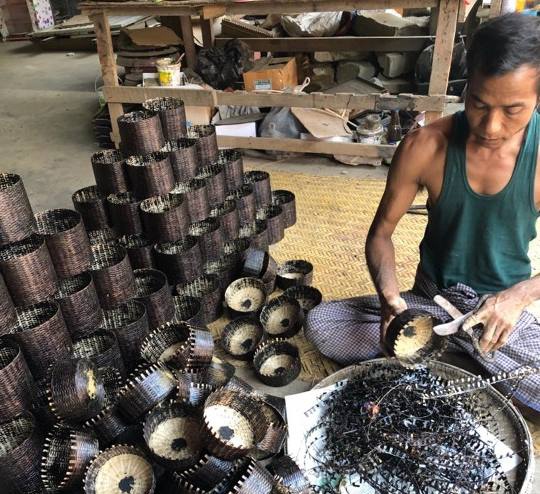
Lacquering
One carries out the first lacquering the interior is covered with “Thayo” a made resin paste with lacquer and mixed ashes. This work is in general carried out with the hand (or with very fine gloves). The number of times where the object of layers will be coated determines the quality of the lacquer (at least to count seven times for a beautiful lacquer). The layers of lacquer are coated with the hand to guarantee of it the smoothness, but also the regularity. The craftsmen who carry out this work used this technique since generations and generations. Most of the lacquerware makers are families working on this from generation to generation.
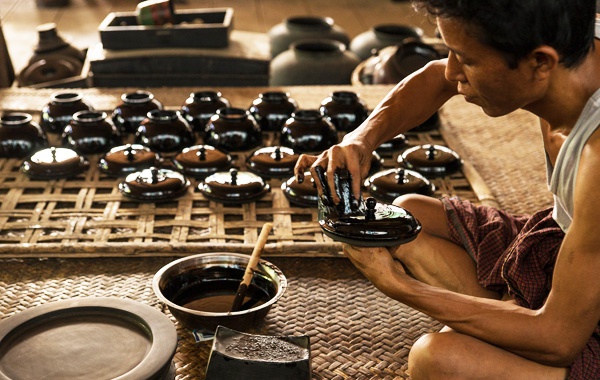
Drying
After the application is finished on the mold in bamboo, and then let it dry for about a week in an obscure and wet place. They then apply a few more coats, each time adding sawdust, cotton fibers or crushed animal bones and waiting for another week. All the workshops of lacquer have thus places corresponding to necessary qualities where they store the lacquers in manufacture. If the moisture is not sufficient, then good quality lacqureware will not be produced.
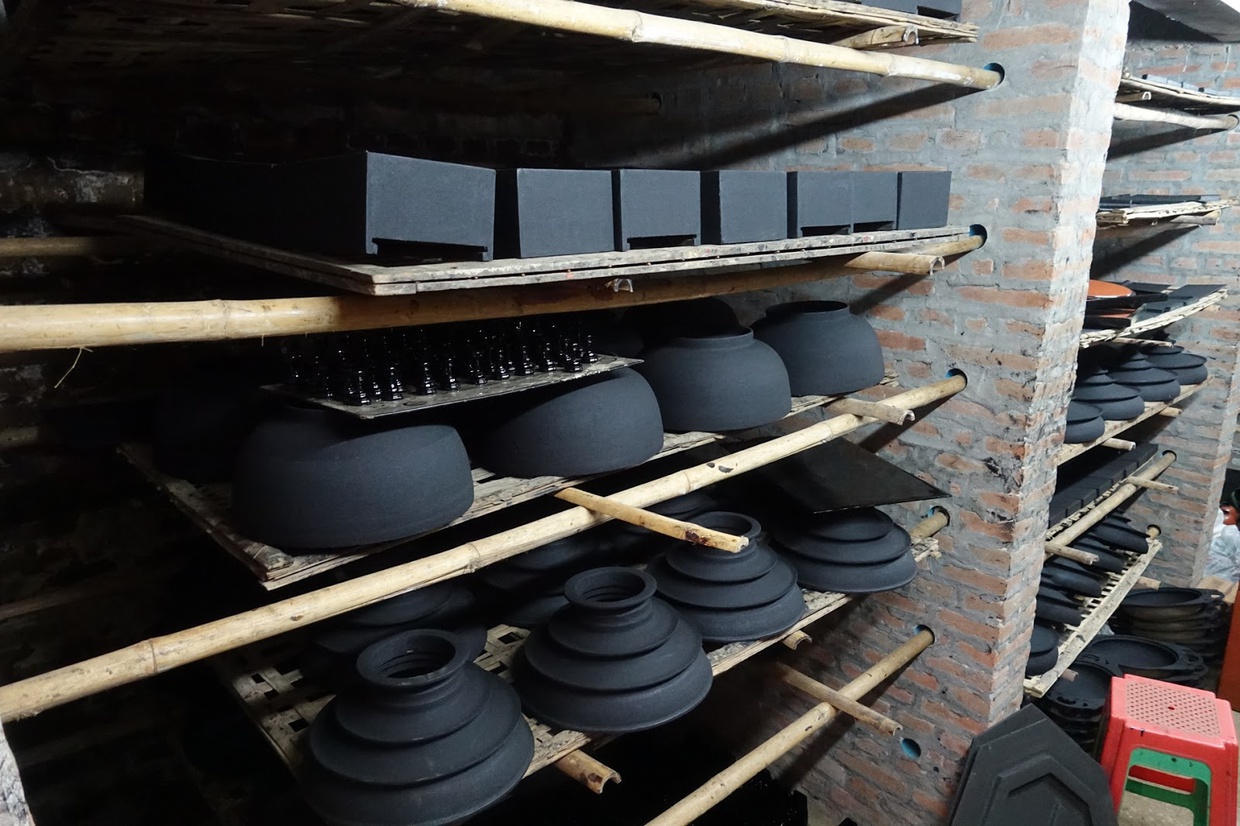
Washing
Once finished drying, the lacquers carefully are washed and sandpapered if necessary. This stage is important for the quality of the future lacquer. This washing and sandpapering is carried out some time with charcoal, resulting from very widespread trees in Myanmar like teak.
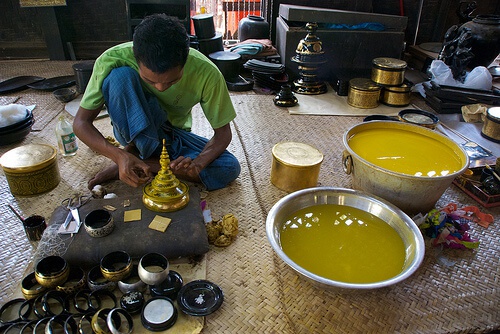
Polishing
After the first drying, one carefully sandpapers the object, one washes it, then one passes by again, the second layer and one turns over to drying. As one passes by again of the layers, the mixture is increasingly fine, one uses ash of ox bone. The layers of the lacquer are carried out evenly and continuously. Each time when a layer is finished, one may polish the surface with a fine fabric.
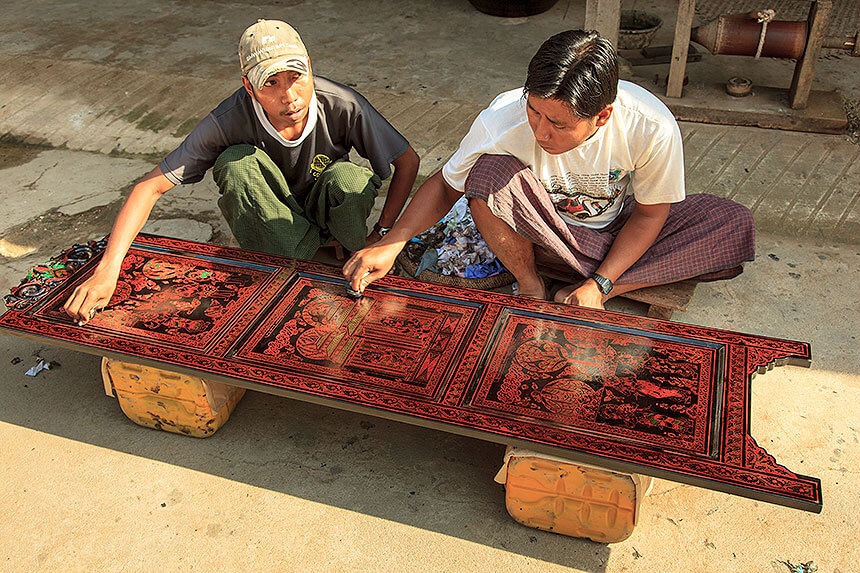
7 layers of Lacquering
The object thus makes several outward journey and return with the warehouse of drying. Each time it thus receives a new layer of lacquer. At the last layer of lacquer, traditional Myanmar lacquerware typically employs only three colors — red, blue and green — though some shops also use gold paint, raising the price of the final product. And when applying the colors, only one can be added at a time. The color is obtained by adding powder of mercury cinnabar to the lacquer. This mixture is called Hinthabada. After last drying for the 7th or 8th times, the lacquer is again sandpapered with teak wood ash, then washed carefully and it then will be decorated.
Decoration
The last stage for a complete lacquer is decorating. Craftsmen use their bare hands, without model to engrave the work, using a stylet and of a brush. The lacquer is inalterable, and the objects in lacquer can preserve all their beauty during years. Not only are the small objects enameled, utensils of crockery, or another objects of worship, but also of the pieces of furniture, the cupboards, the tables, large decorative objects, the musical instruments, earthenware jars etc… are being decorated with beautiful colors. And Lacquerware are also decorated with Burmese floral designs depicting Buddha’s Life or are gilded in gold. Moreover, Myanmar Lacquerware is widely used as kitchen ware, trays, jewellery boxes souvenirs, home decorations and petitions. After carrying out all these processes, the lacquerware are now marketable throughout the country and to overseas.
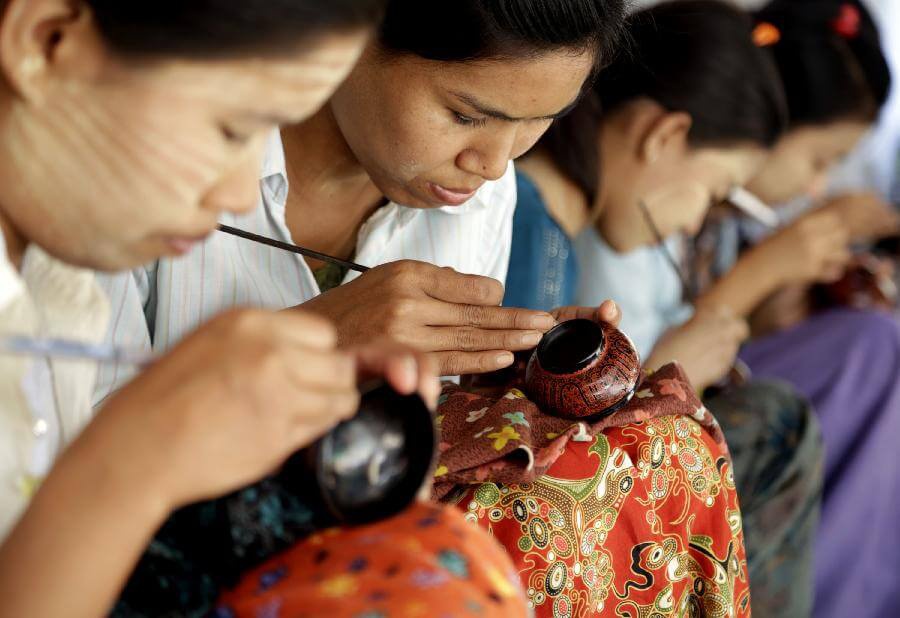
Three types of Lacquerware
Bagan is well-known for lacquerware products. There are plenty of lacquerware workshops and shops to visit in Bagan. There are three types of Lacquerware in Bagan— Relief molded (Thayoe Pan Yun), Incised (Ka Nyit Yun) and With real gold leaf (Shwe Zawa Yun). In Myanmar, the most distinctive vessel is probably a rice bowl on a stem with a spired lid for monks called hsun ok. Lahpet ok is a shallow dish with a lid and has a number of compartments for serving lahpet (pickled tea) with its various accompaniments. Stackable tiffin carriers fastened with a single handle or hsun gyaink are usually plain red or black. Daunglan are low tables for meals and may be simple broad based or have three curved feet in animal or floral designs with a lid. Water carafes or yeidagaung with a cup doubling as a lid, and vases are also among lacquerware still in use in many monasteries.
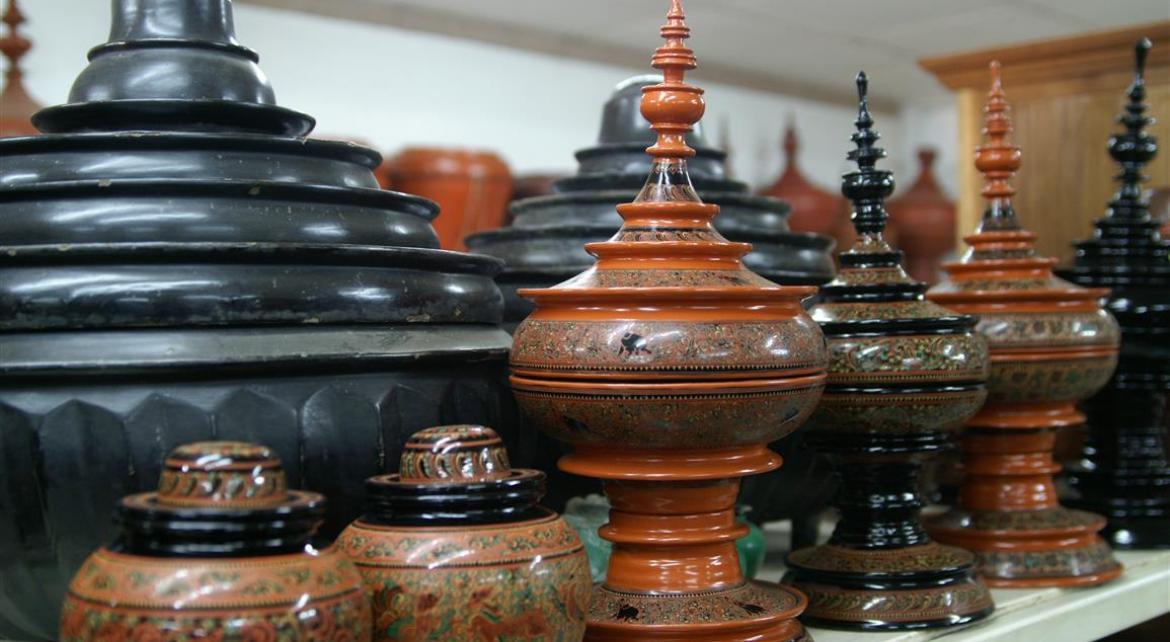
For a Bagan traveller, the local lacquerware is a one of the best things to do in Bagan to understand more about local life. Tourists not only come to study the art and architecturee of historical monuments but also buy lacquerware as esteemed souvenirs.
Famous lacquerware workshops in Bagan where you can explore steps of production are
U Ba Nyein Lacquerware workshop : Address : Main Road, New Bagan.
Moe Moe Family Lacquerware : Address: Main Road, Ywar Thit Quarter, New Bagan.
If you haven’t a chance to buy in Bagan, you can buy lacquerware in Yangon as below:
Pomelo : Address : 89, Thein Phyu Rd, Yangon.
Myanmar Lacquerware Shop : Address: No. 7, 13th Street, Lanmadaw Township, Yangon.
For more information of Lacquerware tour, get in touch with our expert [email protected]
You can enjoy this activity in our popular tour > Insight of Myanmar






Share This Post